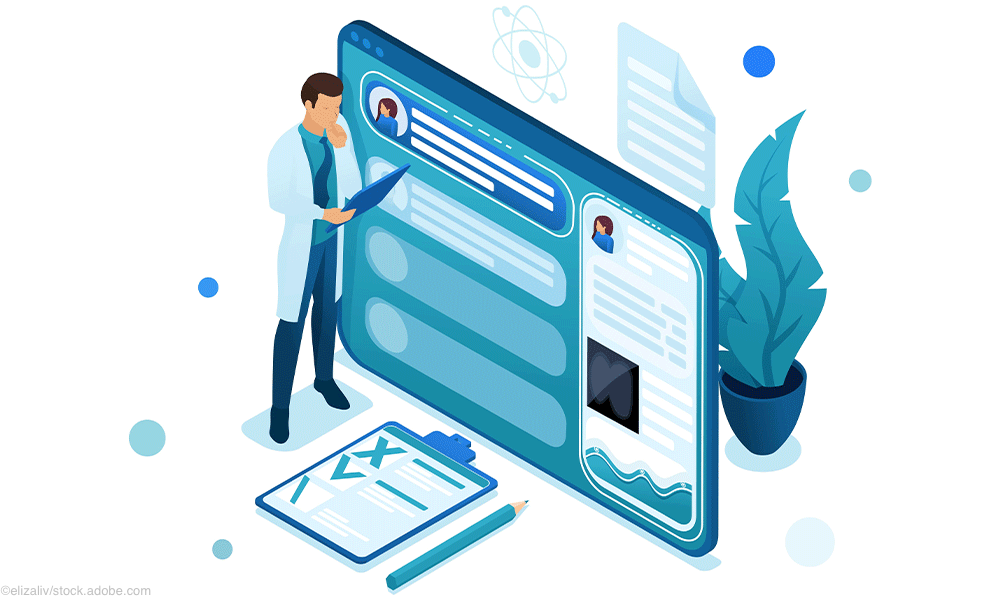Optimizing the patient experience in a post-Covid-19 world
The challenge for practices now is how to continue meeting evolving patient expectations while optimizing revenue and protecting their team from burnout.

Note: This article contains forward-looking statements, including statements about expected trends in the healthcare industry. These statements are neither promises nor guarantees, but involve known and unknown risks, uncertainties and other important factors that may cause actual results, performance or achievements to be materially different, including the factors described in EverCommerce’s filings with the SEC. Any such forward-looking statements represent management's estimates as of the date of this article. While EverCommerce may elect to update such forward-looking statements at some point in the future, it disclaims any obligation to do so, even if subsequent events cause its views to change.
The consumerism of healthcare has significantly accelerated because of COVID-19. Over the last 18 months healthcare providers implemented numerous technology solutions, from video chat to virtual waiting rooms, to effectively care for and engage with patients. Patients became accustomed to the convenience that these solutions provide, and while in-person healthcare visits are on the rise again, patients do not want to revert to the healthcare delivery model that was the norm before 2020. To illustrate, the use of telehealth has stabilized at 38 times higher in 2021 than it was in early 2020, and the health IT market is expected to grow over 10% year-over-year for the next 10 years. At the same time, patient expectations will continue to evolve.
Recent data shows that consumers are increasingly expecting convenient communication and user-friendly technologies from their healthcare providers and they will see these as the most important factors in a good patient experience moving forward. The challenge for practices now is how to continue meeting evolving patient expectations and improve the patient experience in a post-COVID era, while optimizing revenue and protecting their team from burnout.
Understanding Current Patient Expectations
According to a recent survey of 2,076 U.S. adults conducted by The Harris Poll and Updox, 55% of U.S. consumers cite convenient communications like secure text and patient messaging as being most important when it comes to having a good patient experience, closely followed by user-friendly technology at 51%. In addition, half of consumers cite secure information sharing as a key component of a good patient experience and 39% of respondents expect their provider to conduct communications virtually, such as via video calls, texting, or emails.
With patients placing a premium on convenience, it’s no surprise that the technology solutions they consider most important include online appointment scheduling (54%) and patient reminders (65%). In addition, 53% of consumers said they most prefer to update or provide their patient information to a healthcare provider through online forms accessible via mobile phone, email, or a patient portal.
Telehealth also continues to be a priority for patients. While the use of telehealth slightly decreased over the summer,utilization has started to increase yet again and demand continues to hold steady. To illustrate, 41% of patients expect their healthcare provider to offer telehealth appointment options going forward.
Three ways to increase patient satisfaction moving forward
One of providers’ top priorities this year is to increase patient satisfaction. With patients desiring more convenient communications and user-friendly tech, practices need simple solutions to address this need while avoiding provider burnout and meeting profitability goals. Here are three ways how:
1. Connect with patients online
Patients increasingly want to connect with their healthcare providers and handle appointment-related matters on their mobile devices. Providing options like online scheduling and automated reminders can help increase patient satisfaction while reducing the time staff spends on the phone. These solutions can also cut down on no-shows. This can improve revenue flow, since missed appointments cost the U.S. healthcare industry an estimated $150 billion per year. An easy-to-use patient engagement platform with these offerings built in is ideal for optimizing patient communications by relaying information in a safe and efficient manner.
2. Continue to offer telehealth
Before the COVID-19 pandemic, telehealth was a perk that only 18.7% of practices offered. Now, 41% of patients expect their healthcare provider to offer telehealth appointment options going forward. As practices determine their models for post-COVID-19 care, it is vital to continue offering a mix of telehealth and in-person visits to meet patient needs as well as open additional revenue streams. Telehealth offers the ability to communicate conveniently between staff and patients, boosting patient satisfaction and practice productivity. Utilizing a telehealth solution that is HIPAA-compliant and easy-to-use with no app download necessary makes the technology simple, secure, and approachable for patients.
3. Make getting paid (and paying) simple
Over half of consumers cite online bill pay as an important technology solution for healthcare providers to offer. In addition to patient convenience, online billing offers practices more efficiency and lower costs than paper billing. Mobile charge capture is also an important technology to consider. It uses automated processes to record care delivery information and submit it for reimbursement to payers and insurance companies, reducing errors and improving payment times for practices. Combining these solutions can help practices boost their revenue collection and lower administrative costs while also ensuring patient satisfaction.
As patient expectations continue to evolve, healthcare practices will want to implement solutions and processes that simultaneously optimize the patient experience while reducing admin time and improving the bottom line. Leveraging convenient, user-friendly, and cost-effective communication solutions are key to meeting these goals in a post-COVID era.